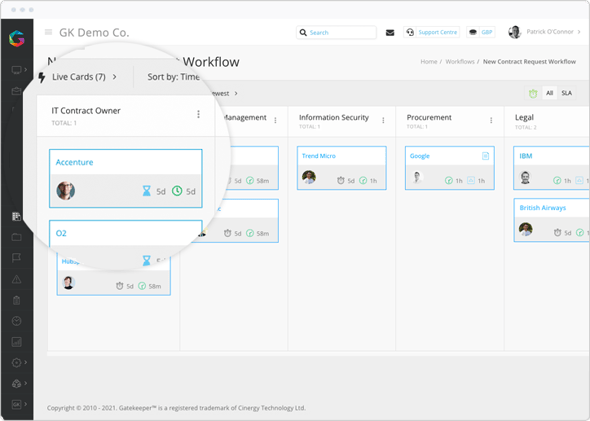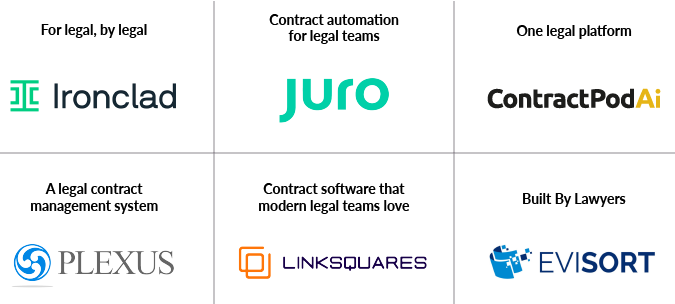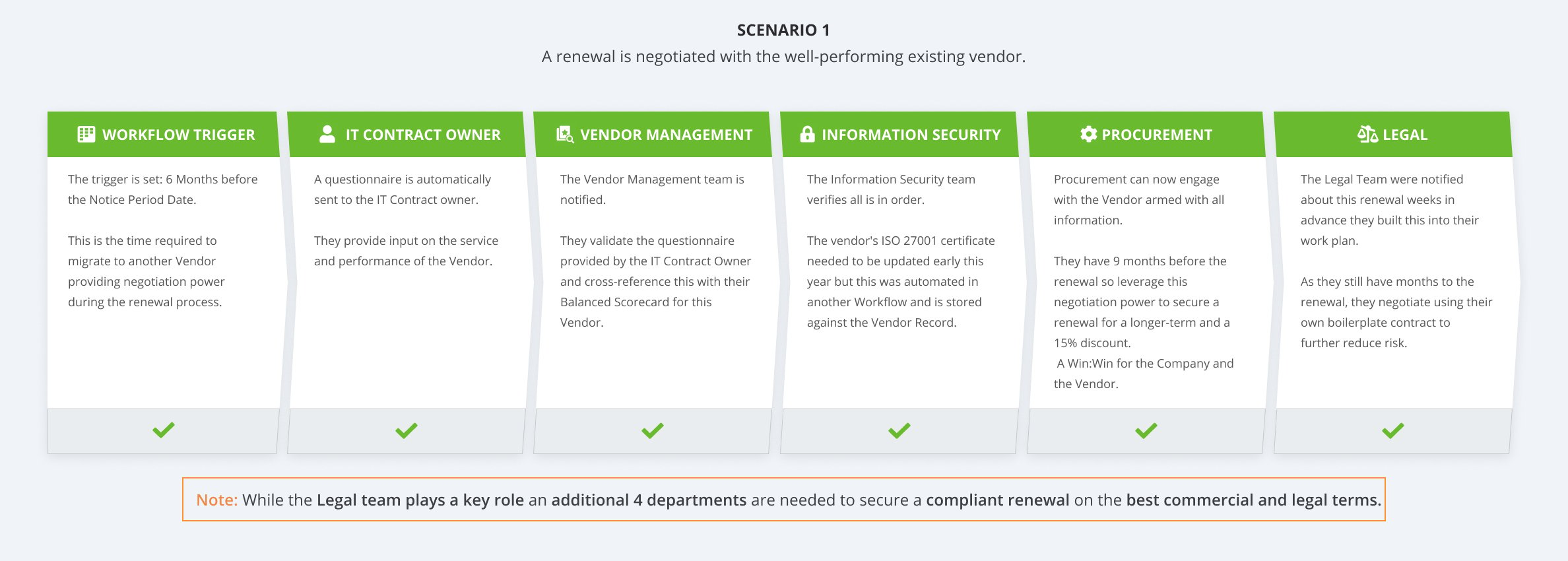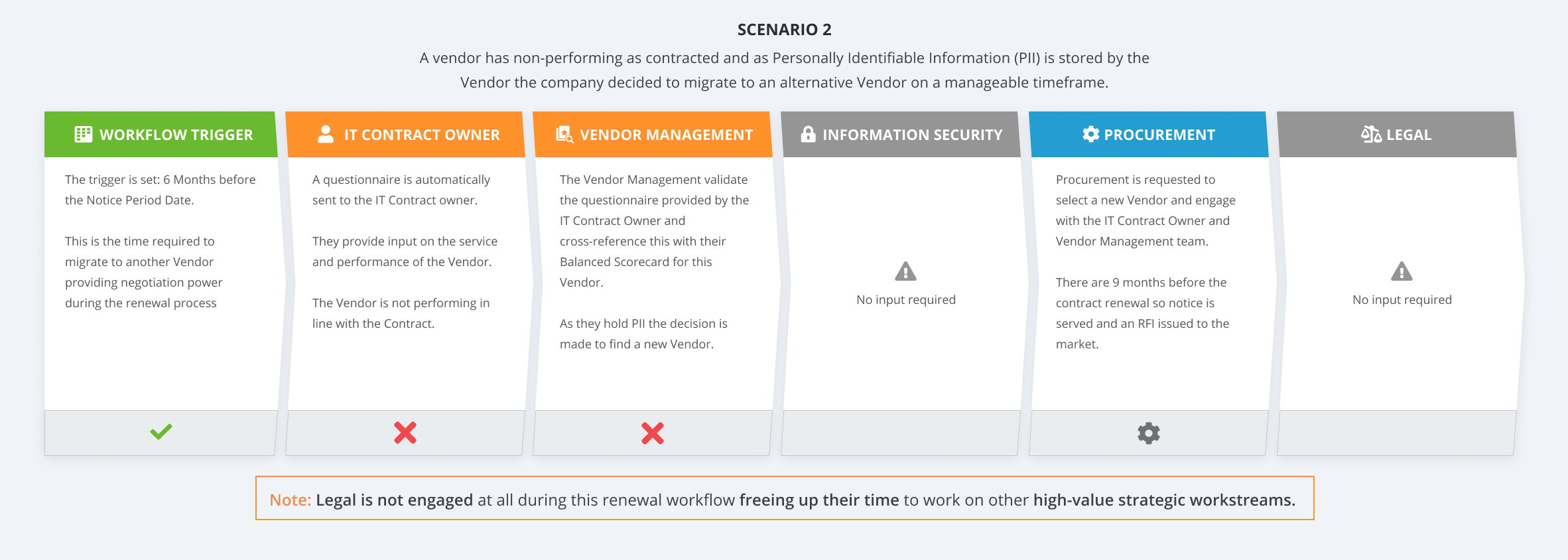The last decade has seen an increasing digital transformation drive across almost all industries to fully digitise their data and processes in the cloud. The impact of the Covid 19 pandemic has significantly accelerated this trend in many sectors, not least Contract Lifecycle Management (CLM).
The almost overnight global transition to remote working had many companies scrambling around searching for fragmented contract data across file servers, inboxes, cloud drives and filing cabinets without local access.
The critical questions answered by a CLM system such as, ‘what contracts are coming up for renewal?’ were superseded by more pressing and complex questions demanded by the C-Suite such as ‘how many of my contracts with force majeure clauses contain the word ‘pandemic'?’ and 'what is the potential cost and revenue impact?’'.
These and other Covid related contract issues have changed the C-Suite’s view of CLM from a ‘nice-to-have’ to a ‘must-have’ solution.
Covid related contract issues changed the C-Suite’s view of CLM from a ‘nice-to-have’ to a ‘must-have’ solution. [click to Tweet]
As much of the contract burden fell to the company's Legal team, a slew of legal-focused CLM solutions have come to market. An entire sector of LegalOps exists to serve this audience and LegalTech CLM providers have been quick to target these customers.
These LegalTech CLM solutions focus on helping the Legal team draft, negotiate and execute contracts more easily. Some solutions also support self-service contracts, radically reducing the work of the Legal team and empowering the wider business.
Many of these companies are founded by lawyers and they are all marketed in a similar way that is appealing to legal professionals and makes perfect sense…...
……...except it doesn’t……….
Contracts are the foundational layer of commerce for your entire business. Only a tiny fraction of these contracts are for the Legal team, the rest support every service and function across your organisation.
A contract’s life also doesn’t end at the signature stage - it begins. In Protiviti’s 2017 Procurement Survey respondents stated that only 20% of negotiated savings hit the bottom line.
Only 20% of negotiated contract savings hit the bottom line.' [Click to Tweet]
The performance of vendors and customers against the obligations outlined in your contracts not only dictates how well you perform as a company, but also governs the risk exposure of your organisation and its compliance against industry regulations and standards. In order to maximise value and minimise risk it is vital to get input from all stakeholders across the business who manage contracts and vendor relationships day-to-day.
LegalTech CLM solutions actually increase the workload on the Legal Team since they now ‘own’ contracts. This means all contract renewals and related work come to the Legal Team regardless of the situation.
LegalTech CLM solutions actually increase the workload on the Legal Team. [Click to Tweet]
Let's illustrate the impact of LegalTech CLM solutions in the following situation.
A key IT Vendor’s 3-Year Initial Term Contract comes up for renewal. They hold Personally Identifiable Information (PII).
Scenario 1: A renewal is negotiated with the well-performing existing vendor.
The stages below represent the automated workflows stages of a contract renewal moving from left to right across each business department.
In this first scenario:
- Workflow Trigger: the workflow is triggered six months before the notice period date to ensure the service can be migrated to an alternative vendor if required. This ensures competitive tensions in any renewal negotiation.
- IT Contract Owner: the Contract Owner in the IT team who manages the contract on a day-to-day basis completes a digitised survey confirming the vendor’s strong performance and compliance with contract and regulatory obligations.
- Vendor Management: the Vendor Management team validates the strong performance of this vendor against all contracts they provide.
- Information Security (InfoSec): the InfoSec team reviews the vendor as they hold PII data. They confirm that an updated ISO 27001 certificate for this vendor was secured earlier in the year using another automated workflow and approve the renewal.
- Procurement Team: the Procurement team now engages and, given the ample timeline and strong vendor performance, negotiate a longer-term contract on better commercial terms - a win-win.
- Legal Team: the Legal team has been aware of the renewal and has planned for the work. They secure the new contract term on their boilerplate contract instead of the vendor paper, further reducing risk.
While the Legal team plays a key role, an additional four departments are needed to secure a compliant renewal on the best commercial and legal terms.'
Using a LegalTech CLM solution this renewal would have come to the Legal department only putting more pressure on an already stretched team. The performance of the vendors against the contract terms and their compliance with data protection laws would be unknown, exposing the company to risk and possible regulatory impact.
Scenario 2: A vendor has not performed so the company decides to migrate to an alternative vendor on a manageable timeframe.
In this second scenario:
- Workflow Trigger: the workflow is triggered six months before the notice period date to ensure the service can be migrated to an alternative vendor. This ensures competitive tensions in any renewal negotiation.
- IT Contract Owner: The Contract Owner in the IT team who manages the contract on a day-to-day basis, completes a digitised survey confirming the vendor is not adhering to the contract obligations.
- Vendor Management: The Vendor Management team validates the weak performance of this vendor against all contracts they provide including this one in the renewal workflow. Given the vendor holds PII data, the team decides to take mitigation action and look for alternative options for all contracts this vendor supplies.
- Information Security (InfoSec): as this contract is not going to be renewed, InfoSec is not needed or engaged.
- Procurement Team: The Procurement team has an adequate timeline and engages with the IT Contract Owner and Vendor Management team to issue an RFI for the contracted services to find a new vendor.
- Legal Team: as this contract is not going to be renewed, Legal is not needed or engaged in its termination.
In this scenario, Legal is not engaged at all during this renewal workflow, freeing up their time to work on other high-value strategic workstreams.
This is just one simple illustration of the inputs needed for best-in-class contract management. Company-wide problems require company-wide solutions, they cannot be solved in isolation in a Legal silo.
Company-wide problems require company-wide solutions, they cannot be solved in a Legal silo.' [Click to Tweet]
In summary, maximising contract value and reducing corporate risk is a company-wide activity.
--
The scenarios in this article and more sophisticated use-cases can be customised and fully automated to your exact requirements in our Visual Kanban Engine.
Gatekeeper provides a unified contract and third party management platform with unlimited users, live Risk and Credit Scores and an onboarding and compliance portal to ensure input from every stakeholder to help manage contracts within your business, reducing the load on busy legal teams.

To find out more and get a demo of Gatekeeper, get in touch today.




.png)
.png)
.png)
-4.png)